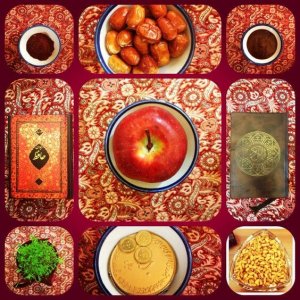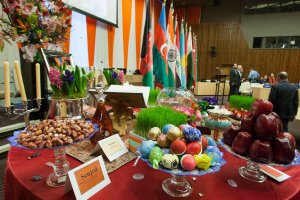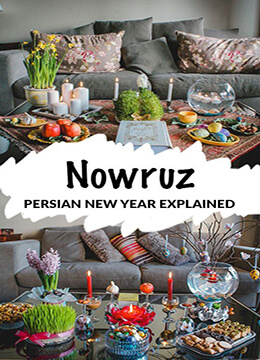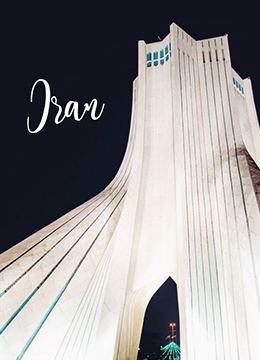Persian New Year Nowruz | The Tradition of Haft Sin
Persian New Year Nowruz & the Tradition of Haft Sin :
:
Nowruz celebrations begin with the delivery of the year; the exact moment of spring equinox. In the solar calendar, the moment of delivery of the year determines the first day (Hormoz Day or Orumazd Day) of the month of Farvardin; 21th March. According to the historians, since the time of the Great Cyrus, about 538 BC, Nowruz is known and celebrates as the first day of the New Year. Nowruz celebrations are held not only in Iran and Afghanistan, but also in most Central Asian countries, such as Tajikistan, Russia, Kazakhstan, Kyrgyzstan, Turkey, etc. Iranian have certain traditions for the New Year, the most important of which is the Haft Sin table and gathering of family members with new clothes at the moment of delivery of the year around it.
Some believed that it was originally called Haft-sheen (seven Sh letters) and that people used to put seven things on the table that start with the letter /Sh/: Sham’ (candle), Shahd (honey), Sharab (wine)…
What Does Each Items in the Haft Sin Table Stand Forٌٌٌ?
Sir (garlic): symbol of Ahuramazda, the creator & sole God of Zoroastrianism
Sabze (wheat or lentil sprouts grown in a dish) symbol of god of Ordibehesht, guardian of run off waters & order in nature
Senjed (Persian fruit) symbol of Khordad, god of passion
Serke (vinegar) symbol of Mordad, goddess of immortality
Samanu (sweet pudding made from wheat germ) symbol of Shahrivar, goddess of food
Somaq (sumac) symbol of Bahman, god of rain
Sib (red apple) goddess of fertility, symbol of love
In the recent years, Nowruz has literally become global; and the United Nations General Assembly ratified the first day of Farvardin, 21th March, as Nowruz in 2010; and they set the Haft Sin Table at the UN General Assembly, every Nowruz since.




